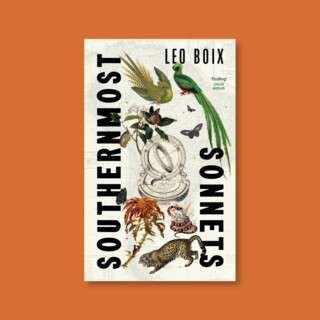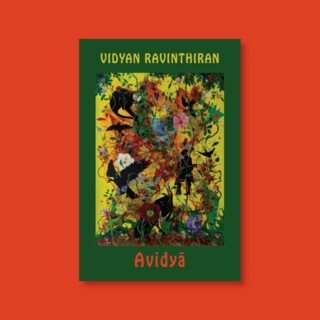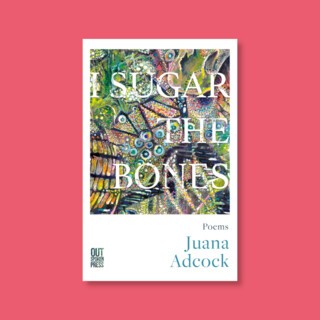‘Here was an attempt to turn the novel upside down’: Michelle de Kretser on ‘Scary Monsters’
Posted by Michelle de Kretser

Michelle de Kretser’s Scary Monsters, shortlisted for this year’s Rathbones Folio Prize, explores immigrant experiences in Australia through two separate, but related, narratives, in an unusual reversible format: pick your starting point, and then flip the book around when you get to the end to begin the other story. In this blogpost, de Kretser discusses how form can enhance content, and her debt to Sianne Ngai’s Theory of the Gimmick.
Scary Monsters is a novel in two halves, each narrated by a first-generation Australian immigrant of colour. One half is narrated by a young woman who is working in France in the early 1980s. The other is set in Melbourne in the near future and is narrated by a middle-aged man. Their narratives flip significant tropes in the literary representation of immigrant experience, but in what follows I’ll concentrate on the novel’s immediately noticeable feature, namely its reversible format. The novel can be read from either end; the reader decides which half to read first and must turn the novel upside down to read the second. Why did I choose this form?
Georges Perec wrote A Void without using the letter ‘e’. The novel describes a violent conflict in which characters keep vanishing and are killed. The missing letter, along with the missing characters, stands in for the deaths of Perec’s parents in WW2, and the void they left behind in his life.
More recently, Ali Smith’s How To Be Both was published in two different printings: one opened with a historical narrative and was followed by a contemporary story; the other printing reversed the order. The reversal reflects the novel’s interest in doubling, the layering of experience and the nature of time.
In both examples, a device that might appear artificially imposed on a novel in fact grows out of the novel’s material. As the American cultural theorist Sianne Ngai, author of Theory of the Gimmick, observes, ‘Art often takes up a gimmick form deliberately.’
Migration, like modernity, is loss of world. In asking a reader to move between two narrative worlds separated in time and place and with no obvious connection, I was asking a reader to experience, fleetingly and on a micro scale, the disorientation and bewilderment that accompanies immigration – as a character in Scary Monsters puts it, ‘When my family immigrated, we felt as if we’d been stood on our heads.’ Immigrants discover that the past is no longer a reliable guide to the future; how they understand and how they are understood has shifted. What’s going on here? How do I make sense of this? These questions, that I imagine a reader asking, are critical questions for immigrants navigating their change of world.
The other reason I wanted a reversible format had to do with form. A novel is readily thought of as a single, continuous narrative that exhibits unity of style, tone and mode. Novelists have always applied torque to that notion, twisting novels into novel shapes. With Scary Monsters, I cut away much of the connective tissue that binds a novel; correlations between the two halves remained, but they were a matter of assonance rather than rhyme. A flip format would serve to signal that here was an attempt to turn the novel upside down as a form.
Yet my feet grew increasingly icy as I revised the final draft. Soon my novel would leave the safety of my hard drive and become an object in the world. The terrors that claw at every writer I know as publication approaches arrived out of season and invigorated. I feared being accused of a cynical bid for marketing attention. I feared that my novel would be seen as a gimmick: shoddy and tricksy. Crawly things crept over me night after night at three a.m. I wondered, not for the first time, if it was really too late to retool as a locksmith. (Think about it: the money, the demand, the absence of mess.) It was at this crucial juncture that I came across Ngai’s book.
According to Ngai, ‘We call things gimmicks when it becomes radically uncertain if they are working too hard or too little, if they are historically backward or just as problematically advanced, if they are wonders or tricks.’ In other words, the gimmick is an object of uncertain value.
Reading Ngai, I saw that immigrants of colour function as gimmicks in Australian discourse. Consider the uncertainty we provoke. We perform work that the native born disdain, while simultaneously stealing Australian jobs. Our cultural diversity enhances Australia from one point of view, while destroying ‘traditional Australian values’ from another. Our numbers are necessary to keep spending up and the economy boosted, but we threaten to overrun white settler society. Australia can’t make up its mind if we are wonders or tricks.
Writers often attest to the magic that presents them with the book or the artefact or the conversation they need when the way forward is unclear. Theory of the Gimmick shored up my belief that Scary Monsters required a flip format. I wrote ‘gimmicky’ into the novel after reading Ngai, once in each half, a secret salute. She had clarified my thinking and fortified my arm, and I wrote to thank her. Here is my public, uncoded acknowledgment of that debt.
Scary Monsters by Michelle de Kretser (Atlantic Books) is shortlisted for the 2023 Rathbones Folio Prize. The winner is announced on Monday 27 March at the British Library.
Join the Rathbones Folio Prize judges Ali Smith, Jackie Kay and Guy Gunaratne, alongside a stellar line-up of shortlistees, at an event at the British Library on Sunday 26 March. Find out more and book tickets here.








